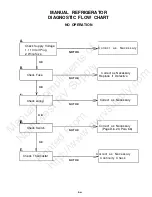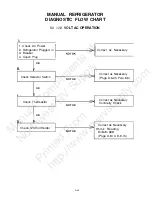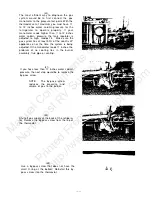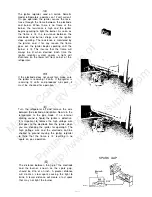
U 3)
As
this process continues, the ammonia and
hydrogen vapors become intermixed and flow
downward into the absorber vessel. As the
ammonia vapor comes in close contact to the
liquid ammonia solution in the absorber vessel,
the ammonia is absorbed into the liquid
solution, allowing the hydrogen vapor to rise up
through the absorber coils. After this absorption
process, the vapor consists of mostly hydrogen
with
some traces of ammonia.
-------
(14)
To remove the remaining amounts of ammonia
vapor still present in the hydrogen, a
continuous flow of weak ammonia solution is
fed, by gravity, to the top of the absorber coil
from the boiler. As this weak ammonia solution
flows downward through the absorber, it
absorbs the ammonia vapor from the mixture,
allowing the hydrogen vapor to rise through the
absorber coil and return to the evaporator. With
the hydrogen returned to the evaporator and
the ammonia remixed into solution in the
absorber vessel, the cooling process can
continue.
(15)
Now that we have a basic understanding of
proper cooling unit flow and operation, let’s
take a step-by-step look at the three require-
ments for proper cooling unit operation. Please
note it is essential that these three requirements
be diagnosed before attempting to diagnose
the cooling unit. A problem with leveling, heat
input or ventilation may lead you to think that
the cooling unit is faulty, when actually it is not.
This causes an increased expense to you, the
customer, and valuable shop time is wasted
because of incorrect diagnosis, By following
and checking the three unit requirements, costly
diagnostic errors can be eliminated.
--- __------
THREE REQUIREMENTS
FOR PROPER OPERATION
1. Level
2. Air Flow (Ventilation)
3. Heat
D-6-6
Manual
Compliments
of
Northwest
RV
Supply
Printed
From
http://www.nwrvsupply.com















































